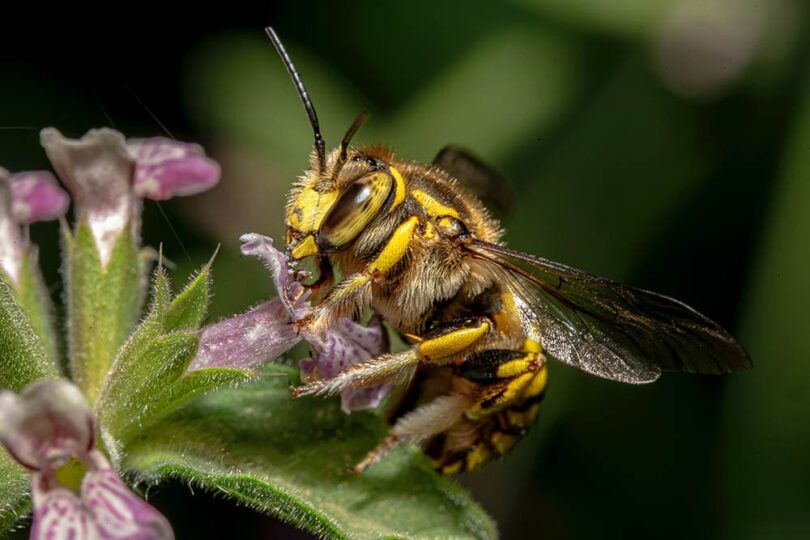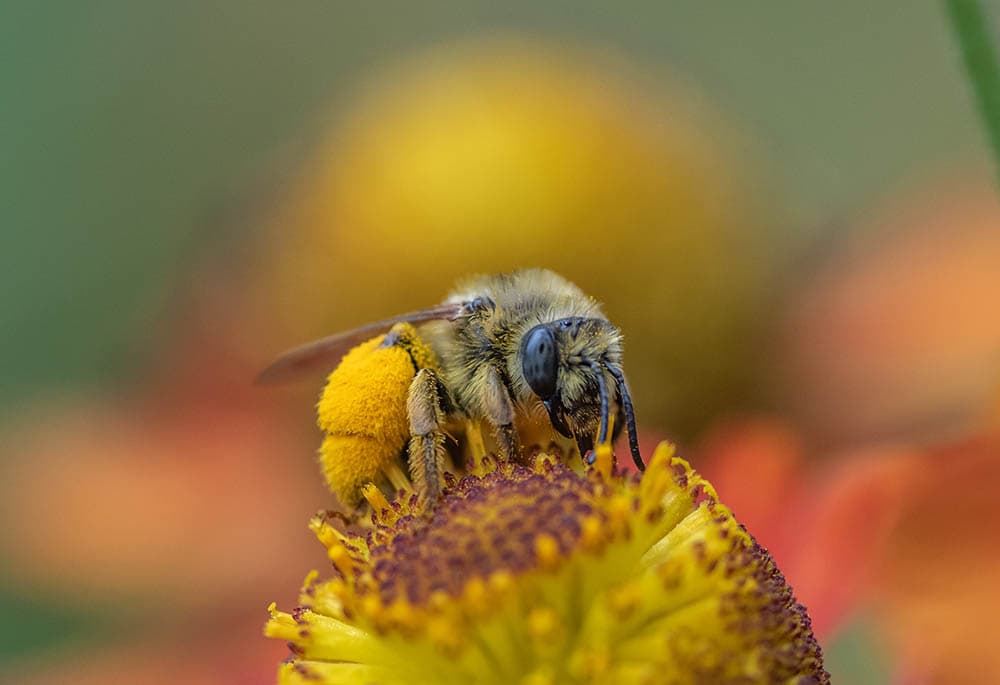How Many Eyes Does a Bee Have?
-
Pete Ortiz
- Last updated:

Bees are incredible insects that are prolific pollinators. Estimates suggest that they save farmers billions of dollars a year by pollinating fruit, vegetables, and crops. They also pollinate a majority of the wild plants and flowers that we see around us. To help in their pollination quest, bees have an arsenal of physical tools, including five eyes. They have two sets of eyes, known as ocelli and compound eyes, with each set serving different purposes. Their eyes even have small hairs on them, which are believed to help detect wind movement and assist in navigation.
Bee Eyes
If you have ever looked closely at a bee, you will have undoubtedly seen its two large eyes, but you may have also seen three small black dots on the top front of its head. These dots are also eyes that help with navigation and protection. The two large eyes make up what is called a compound eye, while the three smaller eyes are simple eyes or ocelli eyes.

Compound Eyes
The compound eyes are the large eyes at the side of the bee’s head. Each one has thousands of lenses, and they can pick up colors, patterns, and movement. Bees can see some colors and are especially adept at seeing purple, violet, and blue, but they can also see ultraviolet and use this ability to not only identify flowers and find pollen but also to navigate to and safely land on the flowers.
Because compound eyes have thousands of lenses, the eyes can see objects from different angles and use this information to determine depth and distance, too.
Ocelli Eyes
Like dragonflies and grasshoppers, bees also have three additional eyes called ocelli eyes or simple eyes. These are located on top of the bee’s head. Each of these eyes has a single lens and essentially detects light. They are used to navigate using the Sun and can also detect when a predator is above them.
They are called simple eyes because they do not see objects in the same way as compound eyes or in the same way as human eyes do, but they are essential to a bee’s survival.
3 Other Interesting Facts About Bee Sight
Although not unique, having five eyes is still unusual even in the insect world. But this isn’t the only way in which bees are well-equipped to gather pollen and navigate around the natural world. Their ultraviolet vision enables them to more easily find flowers and pollen. Other interesting facts about a bee’s vision include:

1. They Can’t See Red Clearly
Bees can see all colors that humans can see, but while they are especially attuned to seeing green, blue, violet, and purple colors, they do not see red very clearly. This is why most bees congregate on purple and blue flowers. They can still be found on red flowers, but this is thanks to their ultraviolet vision. They can see UV rays that reflect off flowers, so they can see flowers of all colors.
2. Different Bees Have Different Colored Eyes
Many bees have black eyes, as is evident when you look at magnified images of them. But this isn’t true of all species. Digger bees, for example, have blue eyes. Some leafcutter bees have green eyes.
3. Honeybees’ Eyes Are Hairy
Some bees even have hairy eyes. Honeybees have tiny hairs on their eyeballs, as well as along the whole of their body. The eyes can detect air movement, but they are spaced approximately the distance of the size of a dandelion pollen grain, so honey bees use their eyes to gather pollen.
Conclusion
Bees provide a vital service to farmers, keen home gardeners, and people in general. They’re prolific pollinators, which means that they transport pollen from one plant to another, enabling the plant to reproduce and spread.
As well as having incredible tools to gather as much pollen as possible, bees also have highly attuned eyesight. Not only can they see ultraviolet light, but they also have additional eyes that help them navigate by the sun. In some cases, the eyes are also covered in tiny hairs that are used to gather pollen and help detect air movement.
Featured Image Credit By: Akbar Nemati, Unsplash
Contents


